One of my greatest joys is photographing birds out my big studio windows. I have lots of plants that attract birds; clumps of gray birches, mulberry trees; a hummingbird garden lousy with salvias and fuchsias.
Fuchsia “Gartenmeister Bonstedt” is one plant that’s a must-have for me, so much so that I save it over the winter in my greenhouse, take cuttings in spring and plant them in planters all over the studio sideyard. The hummingbirds love it. But so do some warblers.
The second time I went to Costa Rica as a young birder, I saw a tree full of birds I knew I’d never seen before. They looked like warblers in every particular, but for their peach-colored throats. I paged and paged through my guides, but I couldn’t find a warbler with a peach throat.
It wasn’t until well after I returned home that I found the answer: They were winter Tennessee Warblers who’d been feeding in a flowering Combretum tree. Pollen from the flowers had stained their throats and faces. Voila! New species.
Here’s a typical fall Tennessee Warbler–that needle-sharp bill, pale superciliary, and lack of wingbars, tailspots, or streaks of any kind. Add clean white underdrawers to the mix and you’ve identified your bird. Some immature Tennessee Warblers in fall may show thin yellowish wingbars, but don’t be fooled.
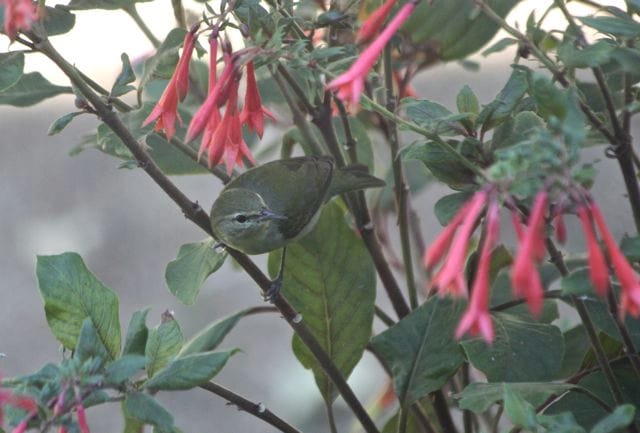
I’m very happy with these photos, even though they were taken through glass. For me, the big score is photographing a bird doing something unusual, something unexpected.
I didn’t expect to see a male Cape May Warbler doing the same thing, but I should have. The Cape May Warbler has a semi-tubular tongue, and it’s a big fan of nectar and fruit. In fact, in Witmer Stone’s time, they were regarded as pests in New Jersey vineyards for their habit of piercing grapes and drinking the juice. Imagine having enough Cape May Warblers around to regard them as pests.
This little fellow (an adult male in basic plumage) trundled all over my Gartenmeister fuchsia, probing each flower like a big clumsy hummingbird.
Moments like this keep me agog and waiting at the window. Which reminds me: I must take in a pot of Gartenmeister before frost! You never know if you’ll be able to find your favorite tropicals come spring. I’ll take some cuttings for insurance, too.
Keep watching for those moments. So much the better if you’ve got your camera ready!
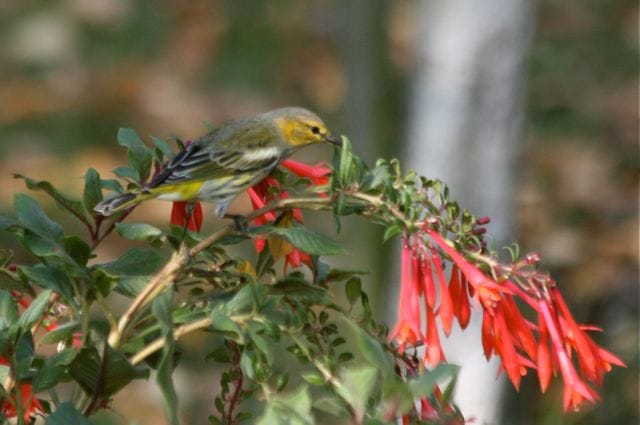
…


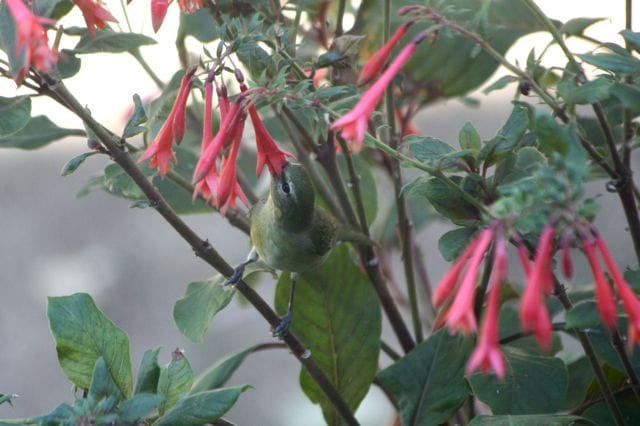
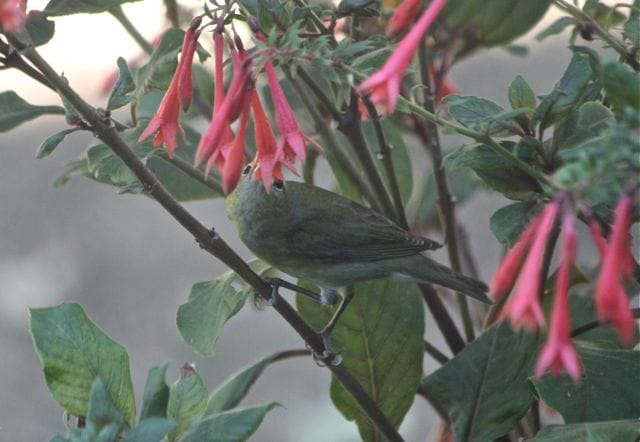
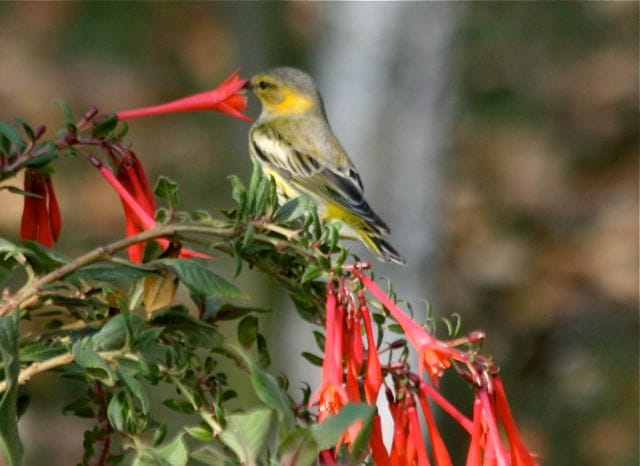
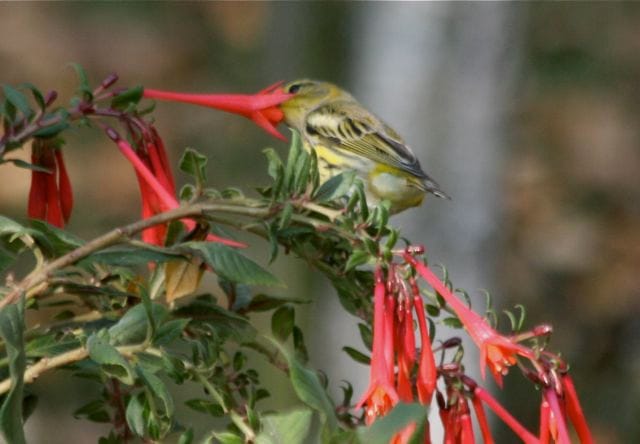











This is wonderful, Julie. Except for RT hummers, I’ve never noticed any other birds attracted to the honeysuckle in front of our home (NJ). Maybe that it’s on a (very untraveled) road that makes the difference. Or perhaps your flowers are particularly delicious for the warblers.